
The Monkees were an American pop rock band formed in Los Angeles in the mid-1960s. The band consisted of Micky Dolenz, Davy Jones, Michael Nesmith, and Peter Tork. Spurred by the success of the television show of the same name, the Monkees were one of the most successful bands of the 1960s. With international hits, four chart-topping albums and three chart-topping songs, the band sold more than 75 million records worldwide.
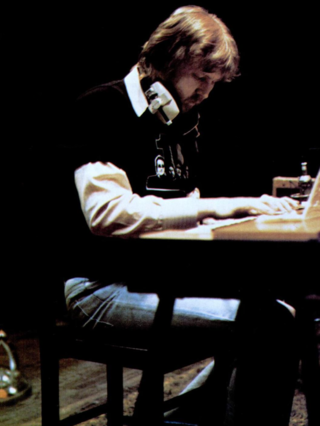
Harry Edward Nilsson III, sometimes credited as Nilsson, was an American singer-songwriter who reached the peak of his success in the early 1970s. His work is characterized by pioneering vocal overdub experiments, a return to the Great American Songbook, and fusions of Caribbean sounds. Nilsson was one of the few major pop-rock recording artists to achieve significant commercial success without performing major public concerts or touring regularly.
A mashup is a creative work, usually a song, created by blending two or more pre-recorded songs, typically by superimposing the vocal track of one song seamlessly over the instrumental track of another and changing the tempo and key where necessary. Such works are considered "transformative" of original content and in the United States they may find protection from copyright claims under the "fair use" doctrine of copyright law.

Pisces, Aquarius, Capricorn & Jones Ltd. is the fourth album by the Monkees. It was released on November 6, 1967, during a period when the band exerted more control over their music and performed many of the instruments themselves. However, although the group had complete artistic control over the procceedings, they invited more outside contributions than on their previous album, Headquarters, and used session musicians to complement their sound. The album also featured one of the first uses of the Moog synthesizer in popular music. Pisces, Aquarius, Capricorn & Jones Ltd. sold over three million copies. It was the band's fourth consecutive album to reach No. 1 on the U.S. Billboard 200.

Aerial Ballet is the third studio album by American musician Harry Nilsson, released in July 1968.
Perry Botkin Jr. was an American composer, producer, arranger, and musician. The tune "Nadia's Theme", composed by Botkin and Barry De Vorzon, peaked at No. 8 on the Billboard Hot 100 in 1976 and became the theme song for the long-running television soap opera The Young and the Restless. He was also a major contributor to Incredible Bongo Band, one of the most influential groups of all-time for its Bongo Rock album which is one of the most sampled from records, making it a major influence in the origins of Hip hop.
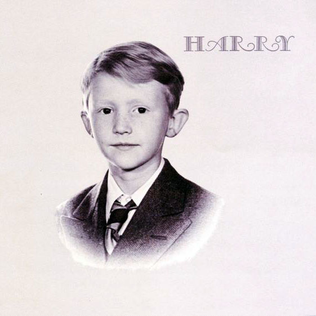
Harry is the fourth studio album by Harry Nilsson, released August 1969 on RCA. It was his first album to get onto Billboard Magazine's Billboard 200 chart, remaining there for 15 weeks and reaching #120.
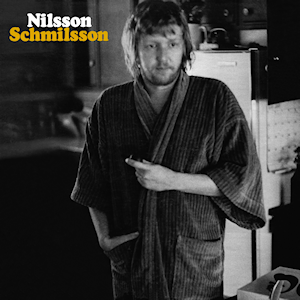
Nilsson Schmilsson is the seventh studio album by American singer Harry Nilsson, released by RCA Records in November 11, 1971. It was Nilsson's most commercially successful work, producing three of his best-known songs. Among these was the number 1 hit "Without You", written by Pete Ham and Tom Evans of the group Badfinger. The album was the first of two Nilsson albums recorded in London and produced by Richard Perry.

A Little Touch of Schmilsson in the Night is a 1973 album of classic 20th-century standards sung by American singer Harry Nilsson. The album was arranged by Frank Sinatra's arranger Gordon Jenkins, and produced by Derek Taylor. This album is notable in being a standards album produced a decade before such works started to become popular again.
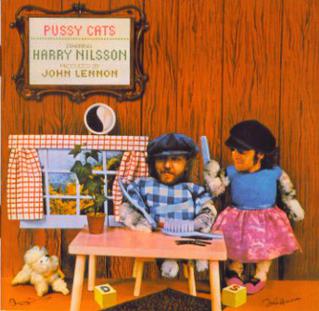
Pussy Cats is the tenth album by American singer Harry Nilsson, released by RCA Records in 1974. It was produced by John Lennon during his "Lost Weekend" period. The album title was inspired by the bad press Nilsson and Lennon were getting at the time for being drunk and rowdy in Los Angeles. They also included an inside joke on the cover – children's letter blocks "D" and "S" on either side of a rug under a table − to spell out "drugs under the table" as a rebus.

Sandman is the twelfth studio album by American singer-songwriter Harry Nilsson, released in January 1976 on RCA Victor.
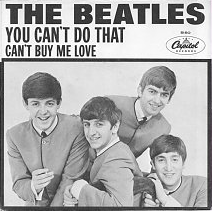
"You Can't Do That" is a song written by John Lennon and released by the English rock band the Beatles as the B-side of their sixth British single "Can't Buy Me Love". It was later released on their third UK album A Hard Day's Night (1964). A live rendition of the song was released on the 2016 re-release of The Beatles at the Hollywood Bowl.

Stop and Smell the Roses is the eighth studio album by English rock musician Ringo Starr. Released in October 1981, it followed the twin commercial failures of Ringo the 4th (1977) and Bad Boy (1978). The album includes the hit single "Wrack My Brain", written and produced by George Harrison, but otherwise failed to find commercial success. It also includes contributions from Paul McCartney, Harry Nilsson, Ronnie Wood and Stephen Stills.
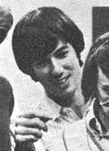
Douglas Farthing Hatlelid, better known as Chip Douglas, is an American songwriter, musician, and record producer, whose most famous work was during the 1960s. He was the bassist of the Turtles for a short period of time and the producer of some of the Monkees biggest hits, including "Daydream Believer" and "Pleasant Valley Sunday".

"Last Train to Clarksville" is a song by American rock band the Monkees. It was released as the band's debut single on August 16, 1966, and was later included on the group's self-titled album, which was released on October 10, 1966. The song, written by Tommy Boyce and Bobby Hart, was recorded at RCA Victor Studio B in Hollywood on July 25, 1966, and was already on the Boss Radio "Hit Bounds" playlist on August 17, 1966. The song topped the Billboard Hot 100 for the week ending November 5, 1966. Lead vocals were performed by the Monkees' drummer, Micky Dolenz. "Last Train to Clarksville" was featured in seven episodes of the band's television series, the most for any Monkees song.

"Yummy Yummy Yummy" is a song by Arthur Resnick and Joey Levine, first recorded by Ohio Express in 1968. Their version reached No. 4 on the U.S. Pop Singles chart in June and No. 5 on the UK Singles Chart. It has since been covered by many artists. Ohio Express was a studio concoction and none of the "official" members appear on the record. Joey Levine sang lead vocals.

"Randy Scouse Git" is a song written by Micky Dolenz in 1967 and recorded by the Monkees. It was the first song written by Dolenz to be commercially released, and it became a number 2 hit in the UK where it was retitled "Alternate Title" after the record company (RCA) complained that the original title was actually somewhat "rude to British audience" and requested that The Monkees supply an alternate title. Dolenz took the song's title from a phrase he had heard spoken on an episode of the British television series Till Death Us Do Part, which he had watched while in England. The song also appeared on The Monkees TV series, on their album Headquarters, and on several "Greatest Hits" albums. Peter Tork said that it was one of his favorite Monkees tracks.

"(Till) I Kissed You" is a song written by Don Everly of The Everly Brothers. It was released as a single in 1959 and peaked at No. 4 on the Billboard Hot 100. Chet Atkins played guitar on this record and Jerry Allison played drums. Recorded 7 July 1959 at RCA Victor Studio, Nashville, Tennessee, and issued as a single July/August 1959 coupled with ‘Oh, What A Feeling’. Don Everly (guitar); Phil Everly (guitar); Chester B. “Chet” Atkins ; Sonny Curtis (guitar); Floyd T. “Lightnin’” Chance (bass); Jerry “J.I.” Allison (drums); Floyd Cramer (piano). Producer: Archie Bleyer.

Good Times! is the twelfth studio album by American pop rock band the Monkees. Produced primarily by Adam Schlesinger, the album was recorded to commemorate the band's 50th anniversary. It is the first Monkees studio album since Justus (1996), marking the longest gap between releases to date, and the first since the death of Davy Jones. The album features surviving Monkees Micky Dolenz, Michael Nesmith, and Peter Tork, as well as a posthumous contribution from Jones.

"You're Breakin' My Heart" is a song by American singer-songwriter Harry Nilsson, appearing on his 1972 album Son of Schmilsson. It is notorious for the opening line, "You're breakin' my heart / You're tearin' it apart / So fuck you".


















